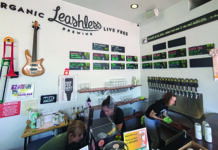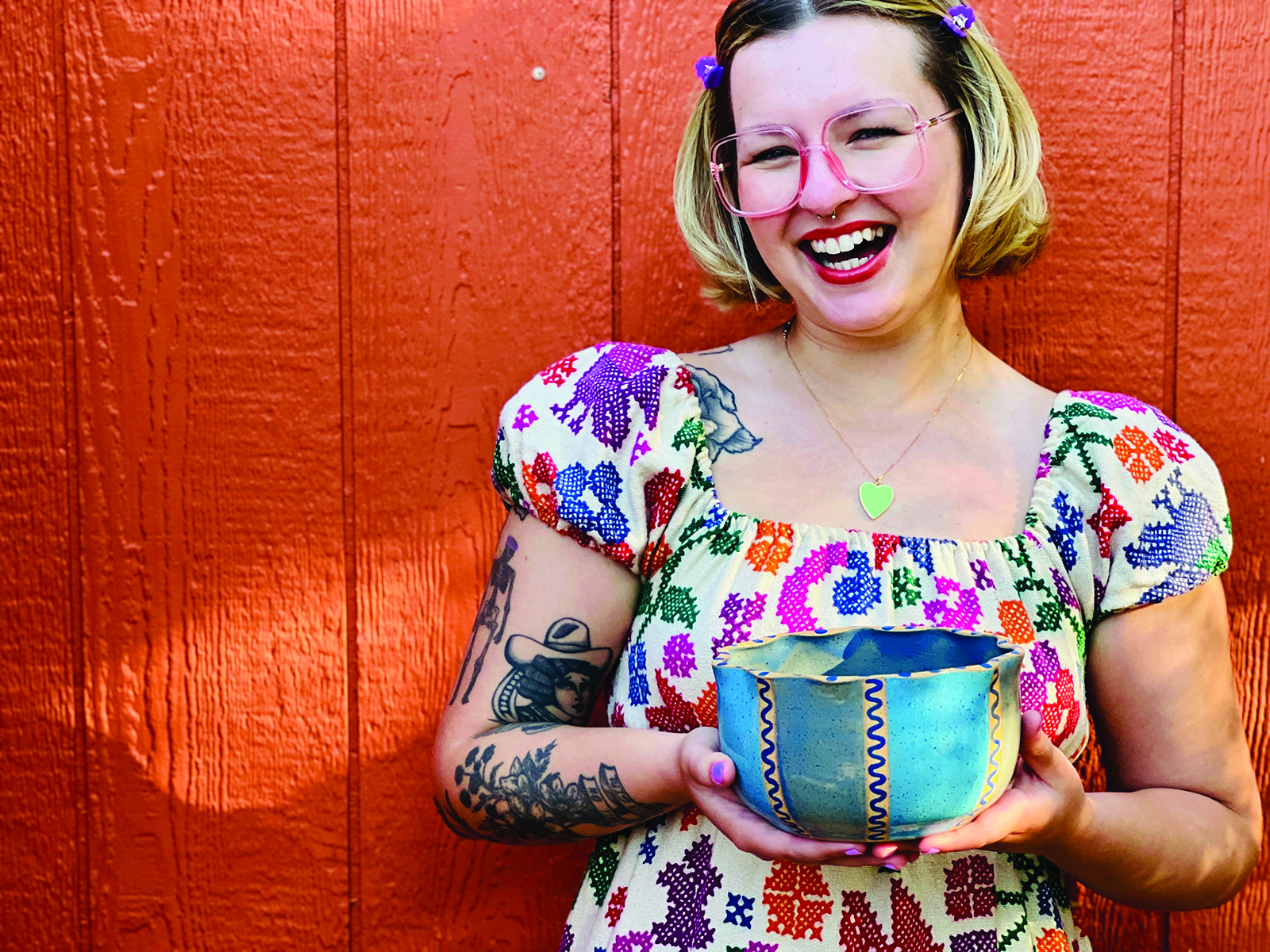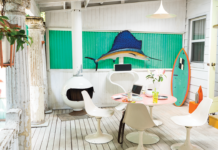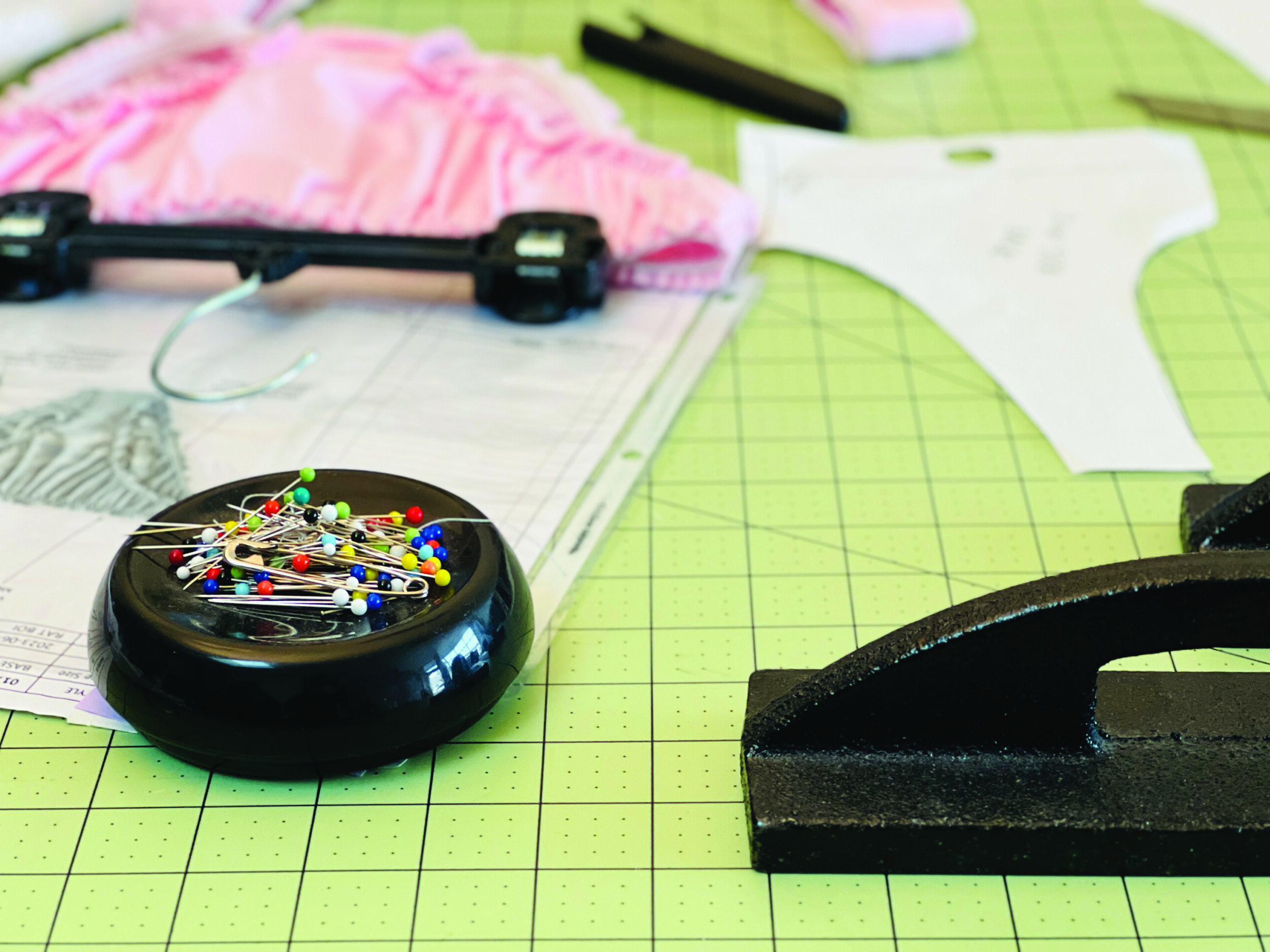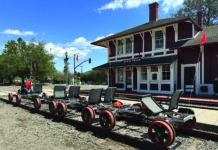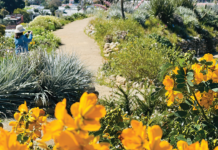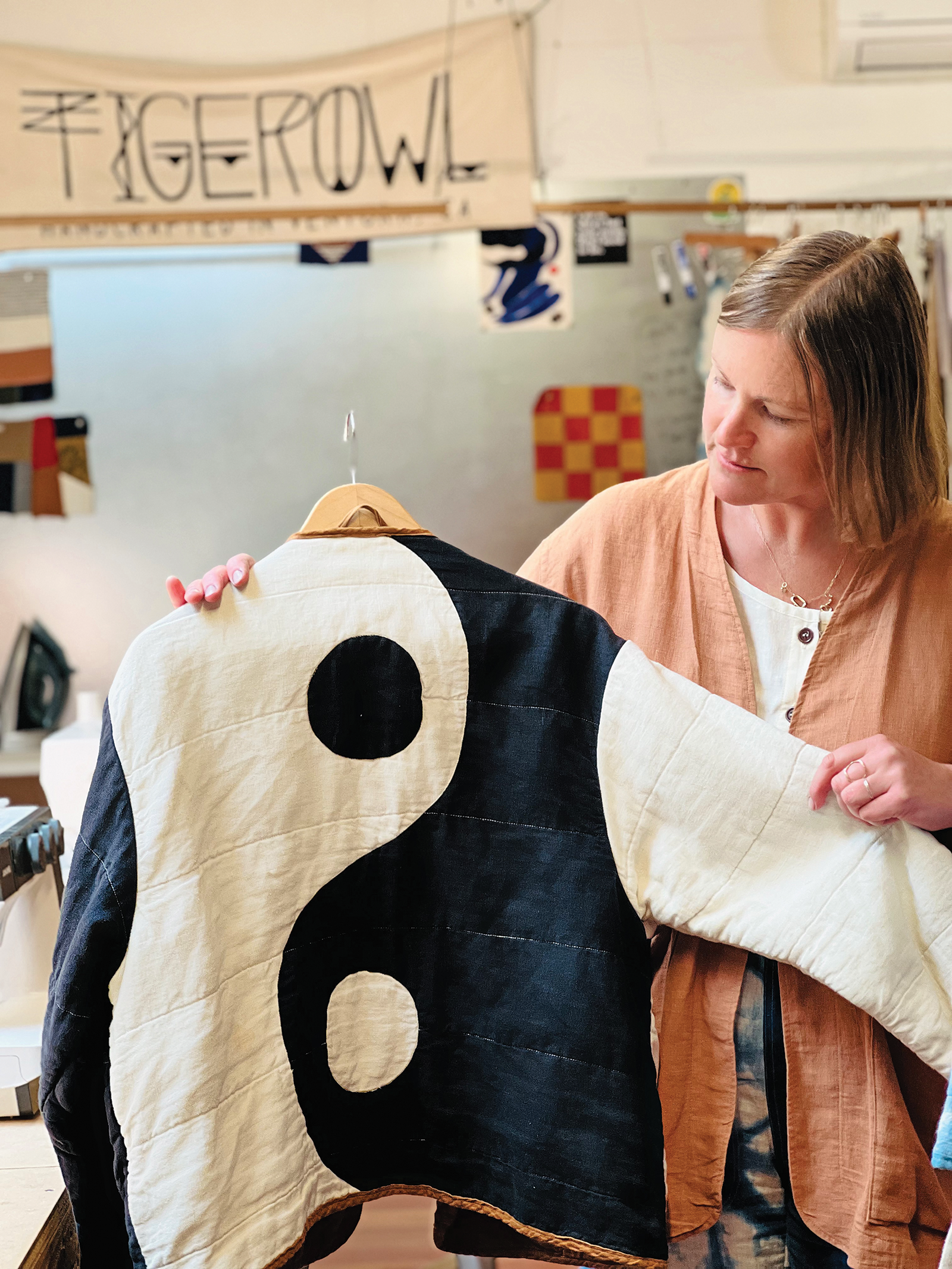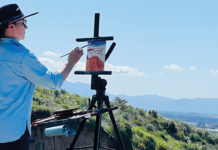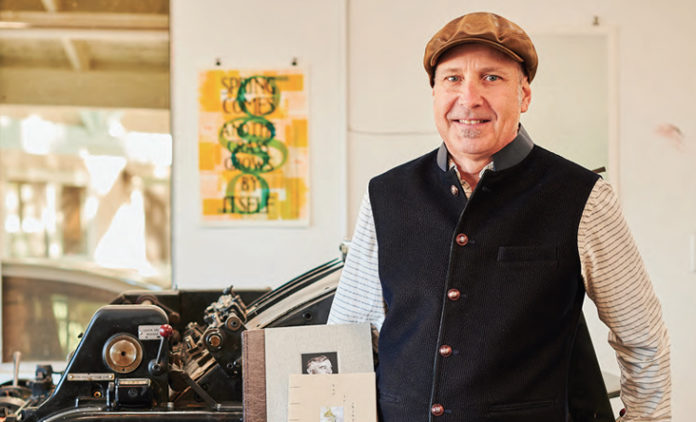By Leslie A. Westbrook | photos by Luis Chavez
he Hopi carve and paint Kachina dolls that are given to children to learn the spiritual and religious significance attached to them. Any sensitive person who has encountered these emblems can sense the spirit and magic that these totems possess.
One doesn’t usually associate a hulking piece of industrial equipment as possessing such a magical energy, but behind the ink-stained door to Norman Clayton’s studio in Meiners Oaks, a massive Heidelberg press, taking up a good portion of the space, has a whole lotta soul and presence, just like the man who operates it.
Weighing in at two tons, the press, built in the 1970s, was once owned by San Francisco-based letterpress printer, book designer, teacher, author and MacArthur Fellow Adrian Wilson. Wilson passed the machine down to Jim Wehlage, Clayton’s mentor, who in turn passed it to Clayton when he purchased Wehlage’s letterpress printing business, Classic Letterpress, in 2006.
Like a musician and their piano or a sculptor and their stone, Clayton’s Heidelberg press is the instrument he composes on. For techies reading this, his workshop equipment includes a 18×23 KSBAZ Heidelberg Cylinder, 10×15 Heidelberg Platen (Windmill), Vandercook SP-15, photopolymer plate maker, paper cutter and foundry type.
That being said, it’s the hand of the man that runs the press that imbues it with its special synthesis of art and artistry.
Clayton himself pays homage to the press’ history through a broadsheet he produced which includes a quote by Wilson:
“The human hand is dominant . . . these men must be willing to experiment with the materials, to work in the medium. This direct connection between the mind and the hand, craftsmanship, makes the difference between the printing which has vitality and that which is mechanical.”
The designer/printer incorporates modern day letterpress technology in his work. Clayton designs on his computer. The typography and imagery is output to a film negative that is used to make a photopolymer plate that is adhered to a base for printing. His results are definitely soulful.
Customers have ranged from Silicon Valley giants to UCLA, retail stores, wineries and restaurants to the Ojai Valley Museum. Clients include poets and prose writers wanting to commemorate a life in poetry and imagery. Others might desire printing for an event, like a wedding or landmark birthday, with beautiful, often handmade paper embedded with thoughtful type and design. Despite the many modern conveniences available to us, people craving the tangible and traditional beat a path to Clayton’s door.
The jazz-loving Nashville native moved to the area 10 years ago from Northern California with his lovely wife, Chayo, and children Siena and Diego. (Siena prints her own line of greeting cards in her father’s workshop.) One need only spend a little bit of time with Clayton to recognize not only his passion and dedication, but an almost religious devotion to his “instrument.”
There seems to be a renewed appreciation for fine printing by dedicated and talented printers like Clayton. I’ve noticed more upscale businesses — from winemakers to shopkeepers to artisans — using letterpress business cards. A talented graphic designer as well as a master printer, Clayton has helped craft letterpress business cards, stationery and envelopes on beautiful paper for clients. He was responsible for the charming stationery and gift cards for the Ojai Ranch House restaurant, which incorporate whimsical drawings by Ojai’s beloved Beatrice Wood. Pick up a bottle of Ventura Spirits’ Pommeau, a limited edition apple apéritif, or La Paloma, distilled from California agave, to find lovely labels illustrated by Ventura artist Ryan Carr (a former intern) and printed by Classic Letterpress.
But this craftsman’s true passion is digging into art books, scrolls and broadsheets that encompass poetry, verse and prose, often combined with art. The hand-bound books upon which Clayton has left his mark are masterpieces that beg to be handled with kid gloves. It’s often a collaborative process that he enjoys and welcomes. The books range in size from minuscule to massive. Miniature books for Lilliputian reading, such as the mini biography of Monseigneur Weber, are “divine.” The recently completed tome The Life and Times of Jo Mora, Iconic Artist of the American West, written by Peter Hiller and designed and printed by Clayton, is an impressive 216-page collectible that was more than two years in the making. It was bound by hand for the Book Club of California, where Clayton serves on the board, and two versions are available through that organization.
Clayton graduated from the Rhode Island School of Design and established a reputation as a fine printer in the Bay Area, where he lived for 20 years before he and his family moved to Ojai a decade ago. He says he was always interested in books.
“Words speak to me. I am a book artist who gives creative expression to words of wisdom,” he tells me as we tour his other workspace — a cavernous 2,000-square-foot outbuilding, which is also used for printmaking workshops open to the public.
Recently launching his own imprint, Providence Press, he confesses another, more specific calling: “The aim of Providence Press is to make books as beautiful as the writing is wise.”
This is evidenced by his first two projects for his new imprint: the beautiful scroll of the important Buddhist scripture the Heart Sutra, translated by Ojai’s Stephen Mitchell, that rolls neatly into a lovely bamboo container; and a letterpress-printed hardbound edition of Mitchell’s version of the Tao Te Ching.
Like monks throughout the ages who have bent over manuscripts, Clayton feels a calling to create spiritual books or texts that blends perfectly with his own Siddha Yoga spiritual practice.
“Providence Press is the realization of a really deep dream of mine that started as a whisper, a longing, a personal desire to make beautiful books of spiritual wisdom,” Clayton admits.
He didn’t discuss his dream for many years. Today, he is understandably protective of it: “Bringing it out into the world feels like having a vulnerable child.”
Working in service to the world’s spiritual traditions in collaboration with people who have the same drive is Clayton’s underlying purpose.
“I want to integrate my spiritual practice with my professional skill,” the master printer concluded. “I’m not the first person to want to make a blessed book! In fact, at the beginning of printing in the Western world, Johannes Gutenberg was creating his 42-line Bible, which is unparalleled in many ways still today!”



